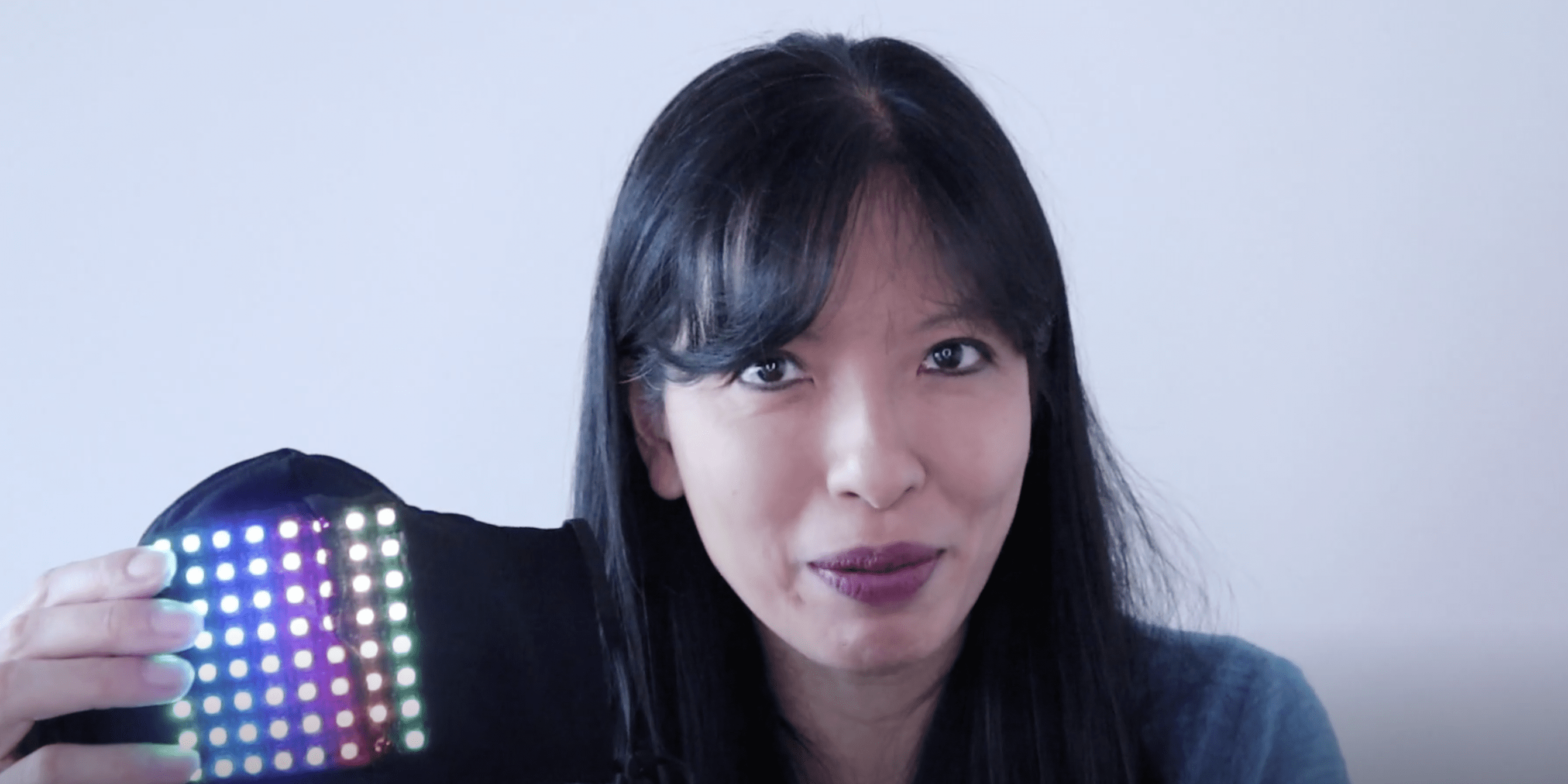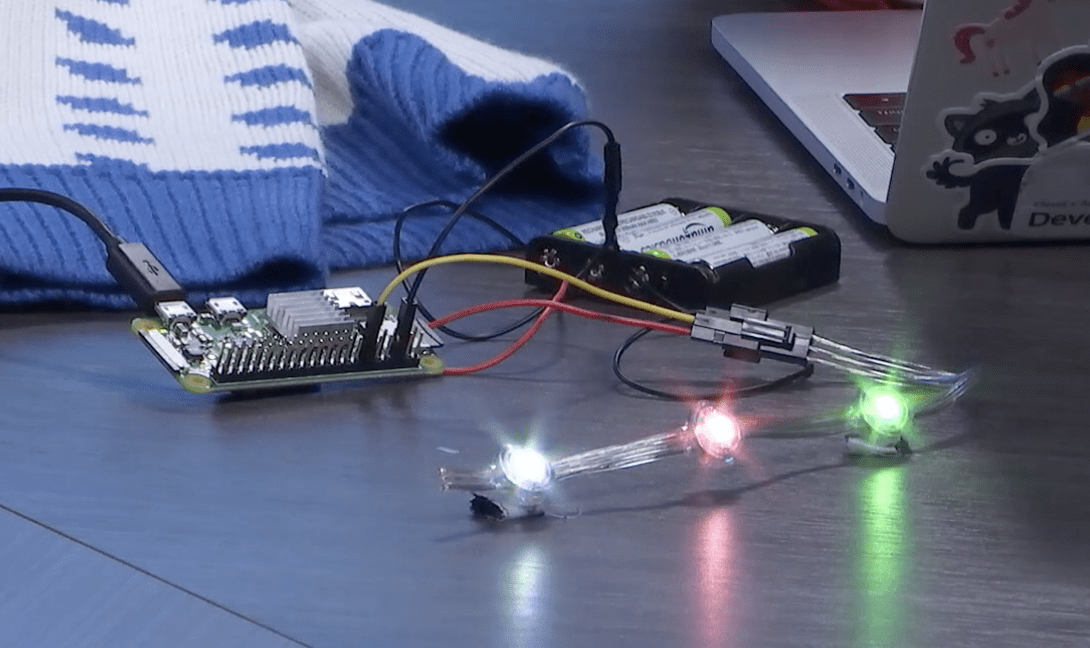Schlagwort: Neopixels
-

Scroll text across your face mask with NeoPixel and Raspberry Pi
Reading Time: 3 minutesHave you perfected your particular combination of ‘eye widening then squinting’ to let people know you’re smiling at them behind your mask? Or do you need help expressing yourself from this text-scrolling creation by Caroline Dunn? The mask running colourful sample code What’s it made of? The main bits of hardware need…
-

IoT ugly Christmas sweaters
Reading Time: < 1 minuteIf there’s one thing we Brits love, it’s an ugly Christmas sweater. Jim Bennett, a Senior Cloud Advocate at Microsoft, has taken his ugly sweater game to the next level by adding IoT-controlled, Twitter-connected LEDs thanks to a Raspberry Pi Zero. IoT is Fun for Everyone! (Ugly Sweater Edition) An Ugly…

